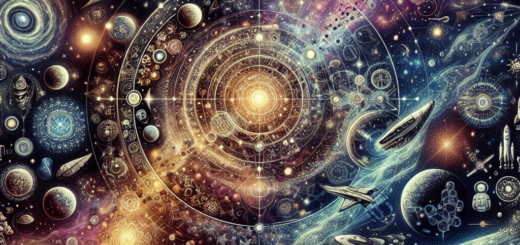A Cosmic Symphony: The Formation of Galaxies in the Universe
The universe is a vast and mysterious place, filled with galaxies, stars, and planets beyond our imagination. One of the most awe-inspiring phenomena in the cosmos is the formation of galaxies – massive collections of stars, gas, and dust held together by gravity.
Galaxies come in many shapes and sizes, ranging from small irregular clusters to massive spirals and ellipticals. But how do these cosmic structures come to be? The answer lies in the intricate dance of matter and energy that has been unfolding since the dawn of time.
The formation of galaxies begins with the Big Bang, the explosive event that created the universe nearly 14 billion years ago. In the early moments of the universe, matter and energy were spread out evenly in a hot, dense soup of particles. As the universe expanded and cooled, these particles began to clump together under the force of gravity, forming the first structures in the cosmos.
Over billions of years, these clumps of matter continued to grow and merge, eventually coalescing into the massive structures we know as galaxies. The process is a complex interplay of gravitational attraction, gas dynamics, and the formation of stars.
One of the key drivers of galaxy formation is dark matter, a mysterious substance that makes up the majority of the mass in the universe. Although dark matter does not interact with light or other forms of electromagnetic radiation, its gravitational influence can be felt throughout the cosmos. Dark matter acts as a sort of scaffolding for galaxies, providing the gravitational pull needed to bring together the gas and dust that will eventually form stars.
As gas and dust accumulate in these dark matter halos, they can become unstable and collapse under their own gravity, forming dense regions known as protogalactic clouds. Within these clouds, stars begin to ignite, creating the brilliant pinpricks of light that populate galaxies.
The shape and structure of a galaxy are influenced by a variety of factors, including its size, age, and environment. Spiral galaxies, like our own Milky Way, have a flat, disk-like shape with spiral arms that extend outwards from a central bulge. Elliptical galaxies, on the other hand, are more rounded and lack the distinctive spiral arms of their counterparts.
As galaxies continue to evolve and interact with one another, they can undergo dramatic changes in shape and structure. Collisions between galaxies can trigger bursts of star formation, while the gravitational pull of neighboring galaxies can distort their shapes into strange and beautiful forms.
The study of galaxy formation is a complex and ongoing field of research, with astronomers using a variety of tools and techniques to unravel the mysteries of the cosmos. By studying the distribution of galaxies in the universe, scientists can learn more about the origins of the cosmos and the forces that have shaped it over billions of years.
In the grand symphony of the cosmos, the formation of galaxies is a breathtaking crescendo, a testament to the power of gravity, gas dynamics, and the delicate balance of forces that govern the universe. As we continue to explore the depths of space, we can only marvel at the beauty and complexity of these cosmic structures, and the mysteries they hold.













